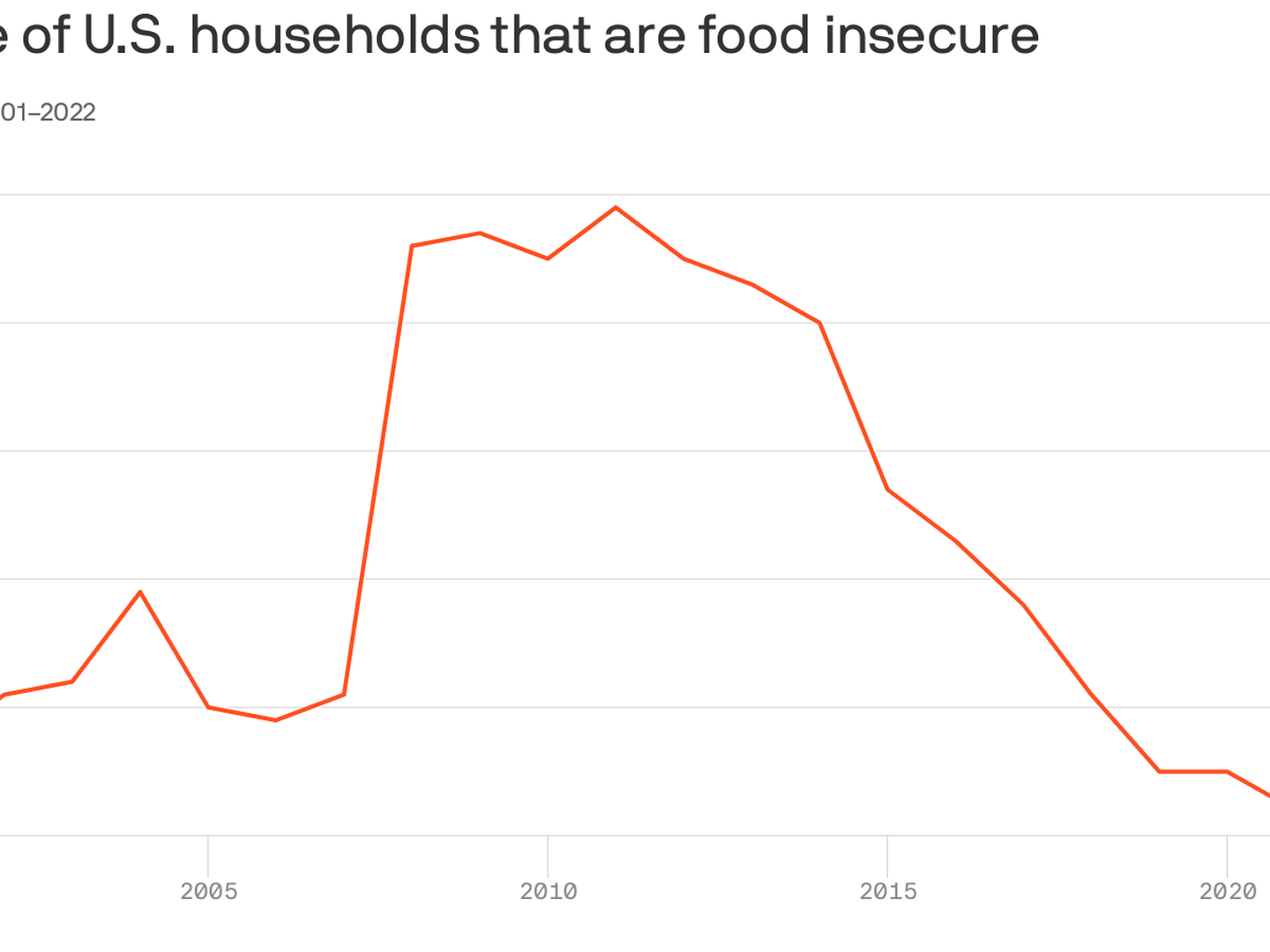- The striking statistic comes amid steep cuts to federal food assistance programs in the world’s largest economy, fueling concerns about the welfare of millions.
The proportion of US adults reporting that they sometimes or often do not have enough to eat has been steadily rising in recent years, according to the survey.
In May, 15.6% of adults were classified as food insecure, nearly twice the rate recorded in 2021. At that time, expanded SNAP benefits and an enhanced Child Tax Credit had helped reduce poverty and increase access to food.
The increase in food insecurity comes as the US economy shows signs of strength and stock markets hit record highs.
John Leer, chief economist at Morning Consult, noted a problem: “There’s such a disconnect now between record highs on Wall Street and elevated levels of food insecurity.”
In Philadelphia, the Share Food Program, a major food bank network, has reported a 120% increase in demand over the past three years. “As soon as the government support pulled back in 2022, we started to see the numbers go up,” the outlet quoted Executive Director George Matysik as saying.
The situation is likely to worsen following the recent passage of sweeping cuts to the SNAP by Congress requiring states to increase funding and imposes stricter work requirements for recipients.
Critics say the changes could strip benefits from millions or reduce the amount of aid they receive. The Congressional Budget Office estimates that expanded work requirements could remove food assistance from 3.2 million people in an average month, the outlet noted.
Food banks across the country are reportedly bracing for increased demand as the cuts take effect, the outlet said. Many organizations are already struggling to meet their current needs, and the anticipated rise in food insecurity is expected to strain resources further.
- Expiration of pandemic-era benefits: Government support programs like the expanded Child Tax Credit, which helped reduce poverty and boost food security, have ended.
- High cost of living: Rising costs for essentials like food, housing, healthcare, and utilities strain household budgets, forcing difficult trade-offs.
- Inflation: While overall inflation has slowed, prices for goods and services, including food, remain significantly higher than they were four years ago.
- Income inequality: Lower incomes and unstable jobs, especially for marginalized communities, make it harder to afford healthy food options.
- Systemic inequalities: Factors like racial prejudice, discrimination, and limited access to resources exacerbate food insecurity in certain communities.
- Sweeping cuts to SNAP: Recent changes requiring states to increase funding and imposing stricter work requirements could further reduce benefits and increase food insecurity for millions




No comments:
Post a Comment